With coasts, caves, waterfalls, and mountains to be found all across the UK, there are plenty of places to learn about important geographical processes and to cover the national curriculum, making it an obvious choice for a geography school tour.
For students, getting out into the real world and learning about the subject first-hand is incredibly beneficial to their development as they learn to investigate and gather real-life primary data, a key skill for fieldwork that can’t be gained from a textbook.
With all that in mind, where would an experienced school travel company like ourselves recommend?
Well, we’ve listed our top 3 recommendations here, with activity suggestions and curriculum links for each one.
The 3 Best Geography School Trips In The UK
1. Cornwall
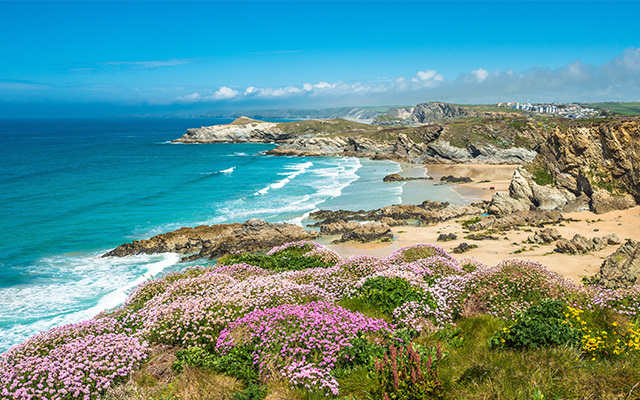
Cornwall is a must-see location for geography students, as the dramatic peninsula of Lizard Point perfectly demonstrates the effects of weathering and erosion, whilst the Eden Project teaches you about biodiversity, ecosystems and sustainability in its curriculum-linked workshops.
By visiting Cornwall, your students will start to make connections between what they have learnt about coastal landforms and erosion in the classroom, and what they are seeing in real life.
At Lizard Point, your students will be able to see the results of coastal processes such as sediment transportation, deposition, and longshore drift, all of which will help them to remember and visualise these processes during their exams. The geology and wildlife are also quite unique at Lizard Point, with over 250 species making a home here including, at times, dolphins.
As well as breathtaking coastlines, Cornwall is also home to the famous St Michael’s Mount, a historic tidal island that will fascinate young geographers as they cross the cobbled causeway and delve into the history of life on the island. According to Cornish legend, the mount was built by a giant named Cormoran whose stone heart is said to be visible along the pathway up to the castle.
As your students explore the sub-tropical gardens and picturesque villages on the mount, they will begin to understand the human geography of the island and how this has evolved over the years. You could even take their learning further by arranging a specialist guided tour of the island, where they will learn more about the medieval castle, the families that have lived there and what life on the mount was like through the ages.
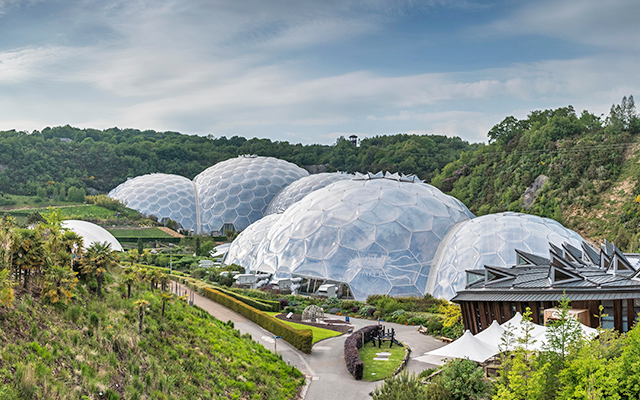
In complete contrast to life on a tidal island, the Mediterranean and Rainforest biomes at the Eden Project will give your students a shock as they are greeted by the tropical temperatures of these two environments. Each dome is full of native plants and organisms, with roul-roul partridges roaming free in the rainforest biome as well as an indoor waterfall, all of which can be viewed from atop the treetop bridge.
At certain times of the year, bananas, pineapples, and cacao pods can be seen growing, as well as many other fascinating plants and shrubs.
Exploring these different biomes, as well as the outdoor gardens, will teach your students about the diversity of ecosystems and how many of the organisms they’ve seen in these environments are under threat.
No matter the age or study level of your students, there are several educational workshops on offer at the Eden Project. Their easy-to-use website allows you to filter the workshops by study level, ranging from early years to A-Level.
If you wish to deepen your students’ understanding of climate change, there is a 2-hour Climate Challenge workshop that takes students through the impact, timescale, and solutions to climate change by exploring these issues around the Eden site as well as in classroom-based activities. This experience helps to broaden students’ knowledge of climate issues by recognising the actions they can take to make a positive impact on the planet.
For a more hands-on, physical workshop you could take part in the Storm Patrol Eden Challenge, where students are given the task of building a den that could withstand a storm. Working in teams and through barter and trade, each team gathers the resources they need to make the best den, which is then judged against a set of criteria. This workshop is all about teamwork and communication, crucial skills for a geographer.
On your way to Cornwall, it is definitely worth visiting Wookey Hole Caves because the study of coastal landforms wouldn’t be complete without a visit to a cave!
There are several underground chambers to explore, with each one containing different rock formations and fantastic examples of sedimentary rocks.
Outside the caves is the Enchanted Valley, which is thought to have been home to ice-age animals such as mammoths, lions and even cave hyenas over 35,000 years ago. Farmers were also thought to have lived near the entrance of the Wookey Hole Caves over 2,000 years ago and following that, the Romans are said to have visited the caves to worship the spring water, hence the name ‘Enchanted Valley’.
Finally worth noting, is the opportunity for your students to take part in a beach clean-up activity in St. Ives, which will help them to feel they are making a real impact on the environment around them and reinforce their passion for geography.
Students are given bags and gloves by the hostel and some guidance on what to look for during the cleaning. By taking part in an activity like this, they will leave Cornwall with an appreciation of how its landscapes were formed, how humans have influenced environmental changes to the land, and why it is so important to look after the planet.
2. Yorkshire Dales
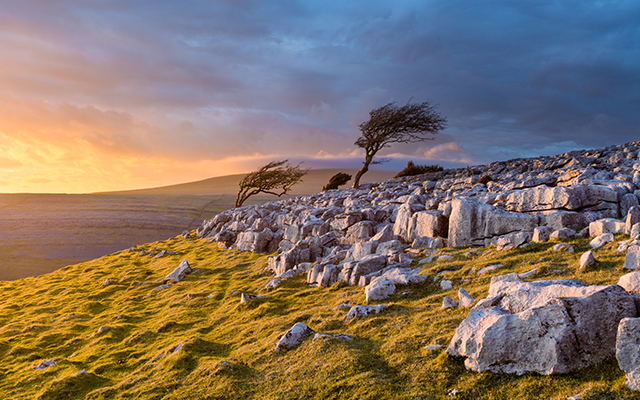
The Yorkshire Dales have so much to offer in terms of geography. Some of the UK’s most famous caves can be found in Yorkshire, each with an array of geographic features inside such as waterfalls, mud pools and stalactites. The Dales themselves are famed for their beauty and make the perfect backdrop for a walk and for field studies. From caves to waterfalls, mud pools to caverns, there is much to be gained from visiting the Dales.
Of particular interest to many school groups is the White Scar Caves, the longest show caves in the UK, which boast impressive stalactites, waterfalls, and underground streams. Whilst exploring the caves, if your group are lucky (or rather, unlucky!) you might get dripped on by the Devil’s Tongue, a legendary flowstone hanging from the cave roof, or you may spot the small orange stalactites known as ‘the carrots’ as you gaze up into the heights of the cave.
Your group will learn about the processes that caused these features to form as well as learn about the people who first discovered and navigated the underground cave systems. Seeing and hearing these first-hand examples of how caves are formed will stay with your students for a long time.
If your group is particularly intrigued by caves, be sure to follow the nature trail to Ingleborough Caves and marvel at the impressive limestone entrance that greets you at the end of your walk. To be impressed further still, continue your walk to reach Gaping Gill, the most famous cave in the Dales and one of the longest caves in the UK.
The Fell Beck stream runs straight into the mouth of Gaping Gill and falls over 100m before hitting the cavern floor, making it one of the longest unbroken waterfalls in the UK. These natural wonders alone are enough reason to visit Yorkshire.
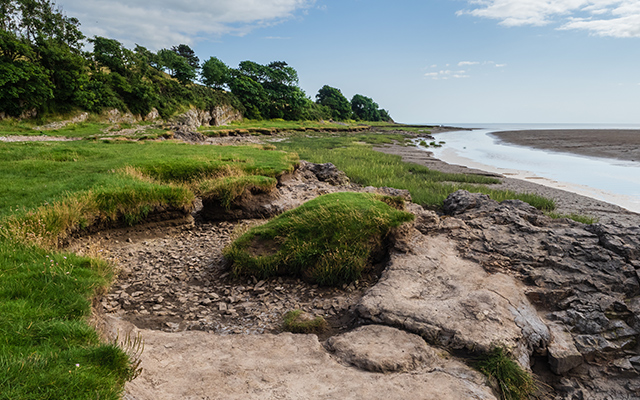
For fieldwork and developing geographical skills, we recommend visiting Arnside and Silverdale as there is plenty here to investigate. Marked as an Area of Outstanding Natural Beauty, your students will have a large variety of wildlife, woodlands, and meadows to explore, making it easy to tailor your visit here to coincide with a particular topic on the curriculum.
Take a stroll along the coast and discuss limestone landforms, or take a walk in the woods, encouraging your students to follow maps and navigate their path independently. There is also a huge amount of conservation effort happening across Arnside and Silverdale, from encouraging the re-growth of trees to surveying butterflies, all of which is important to highlight to your students.
There is an opportunity for your students to expand on navigational and mapping abilities during their residential stay at the youth hostel in Malham, which runs several geography activities covering these skills. Activities ranging from river studies, GPS trails and fossil hunting can be facilitated by a trained guide, giving your students a great chance to get hands-on with their surroundings.
3. North York Moors National Park
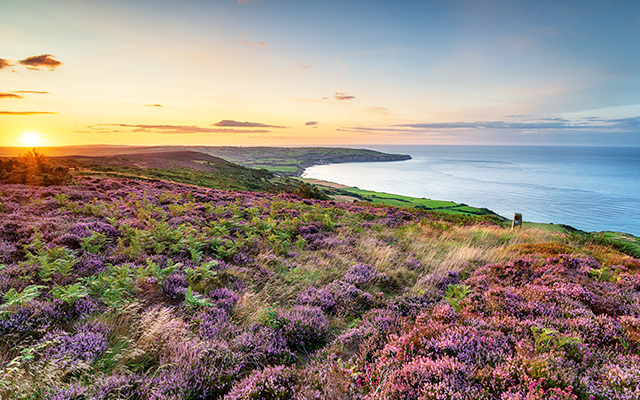
Finally, the stunning North York Moors National Park is a spectacular example of the UK’s natural beauty with a variety of geographical features to explore.
The vast moors cover a third of the national park and if you visit in the late summer, you will enjoy the flowering purple heather, a sturdy evergreen shrub that does well to survive the strong winds and wet weather of Yorkshire!
You might even be lucky enough to spot a puffin, as they come to the Yorkshire coast during the summer for their breeding season.
An abundance of rivers and streams flow through the North York Moors, with much to learn about river formations and flooding. In the 1930s, the River Esk flooded so badly that it destroyed several bridges and roads in the surrounding valley. Your students can learn more about river systems and geographic processes whilst visiting the national park through a workshop led by experienced experts that we can arrange for your trip. You could also lead your students’ fieldwork whilst exploring here.
To engage with the flora and fauna of North Yorkshire further, take your students to Flamingo Land, a theme park and zoo that also offers great workshops linked to the UK National Curriculum. With over 140 species living at the zoo, students will enjoy the chance to see animals up close and learn about the conservation work happening to protect these animals. A visit here will help impress upon your students the importance of conservation work and looking after the diverse species of the world.
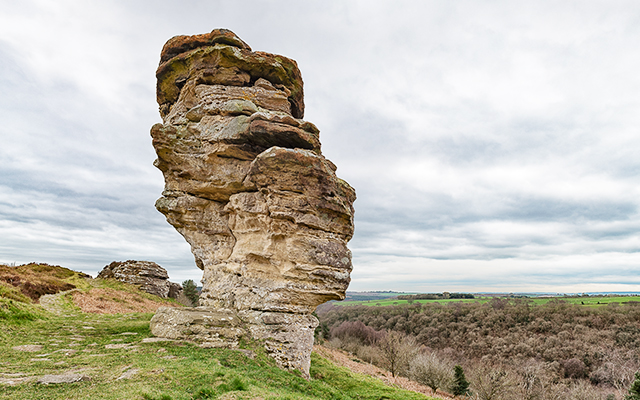
And if you’d like to explore wildlife further still, a walk through Dalby Forest will prove a breathtaking experience and is another great opportunity for some fieldwork.
You will have the joy of showing your students the Bridestones, a collection of oddly shaped sandstone rocks that were formed by the movement of glaciers during the Ice Age. They have since been eroded and re-shaped by rain, ice, and wind, creating the unique forms of rock standing there today and providing a fantastic example of glacial erosion in the UK.
Walking through the forest itself is a fantastic experience as it is home to an array of ancient trees, giving your woodland walk a magic and spiritual feel. Being surrounded by this natural environment whilst learning about the importance of geography will help your students to feel immersed in their subject when they return to the classroom.
Summary
Choosing any one of these destinations for a UK school trip will provide students with a spectacular educational experience that really brings the subject to life for them.
Getting outside the classroom and seeing the wonders of the world up close is crucial for developing a deep understanding of geography and will not only benefit students in their exams but in their futures too.
An interest in climate change and the welfare of our planet is now more important than ever, so we hope these recommendations captivate your students and inspire them to become lifelong geographers!
If you're ready to start planning your next school trip, please don’t hesitate to contact us for any further information or advice.
Or if you're still unsure about where to go, then why not take a look at our geography field trip ideas – with several more exotic locations!